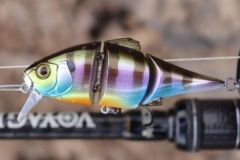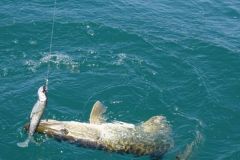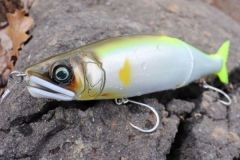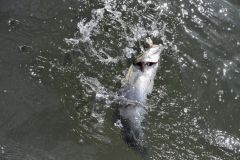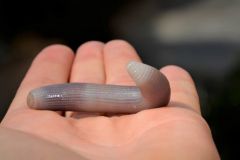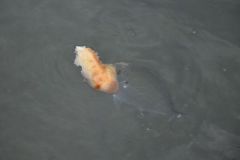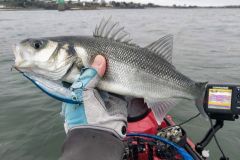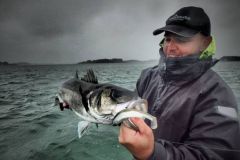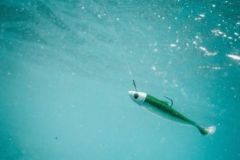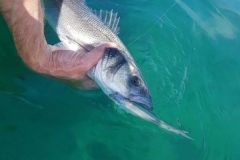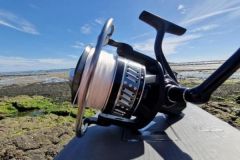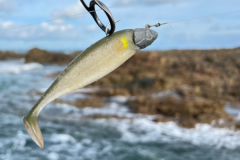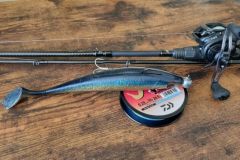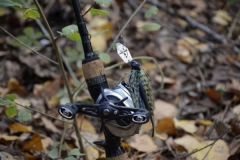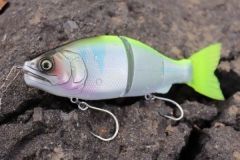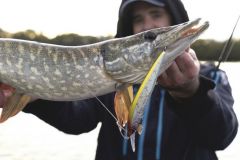When the sea is low and the lower foreshore is accessible
In this configuration, the kelp fields may be at the surface or just below a thin layer of kelp film of water, making fishing difficult.
The use of a soft lure with hooks protruding from the lure is made impossible. Here, turn to to lures that limit the risk of hooking, such as assemblies texan or weightless .
Surface lures are also effective when algae are covered.
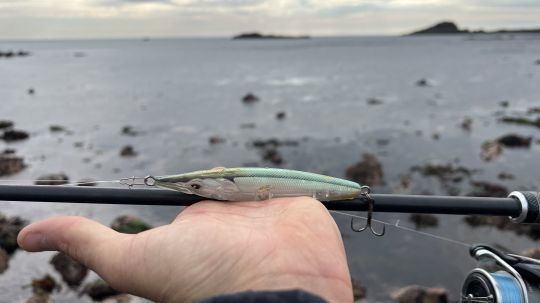
Finally, in this then one of my favorites is the Dark Sleeper from Megabass . The hook is fully integrated into the body, making it easy to slip into kelp avoiding the risk of snagging.

Above ponds at low tide
This period differs according to the configuration of the fishing spot. It is close to the mid-tide generally. A at that time you fishing a food-rich area, where at low tide you were able to locate the pools in which shrimps, crabs and small fish had taken refuge.
Predators are not mistaken and are sure to be around. In these areas, it's best to go for scratch fishing. The fish are usually upside down, digging through seaweed or riprap .

Lures like black minnow and its Texas hook or the other lures to bounce off the bottom are effective. You'll need to be reactive to the bite to extract the fish from the bottom. In these sectors you of course, you'll find a bar but also many old ladies who greatly appreciate this biotope.
High on the foreshore, when the sea is almost full
This part corresponds to à where the fish are essentially passing through. As explained in the previous article, there is little to keep them in the area.
The aim here is to cover as large an area as possible. All lures are suitable but a preference for fish swimmers or surface lures, depending on the season. These have the ability to make a lot of noise due to the internal beads and can be heard from a distance. If predators are active in the area, they'll soon make their presence felt.
J' also likes to use linear soft lures such as the shads for example. Thanks to their paddle, they brew and solicit even the most timid fish.
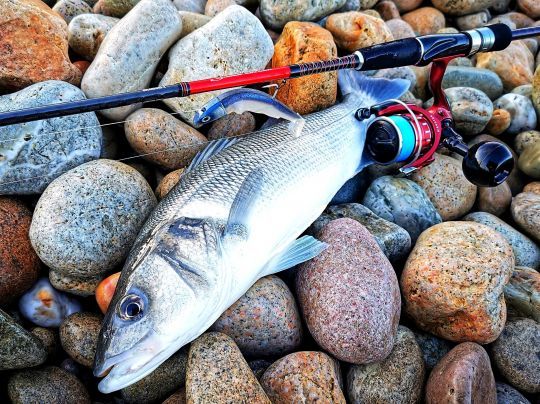
If you locate the fish, you'll need to make a series of casts. On these spots, the fish are very mobile and can disappear in a flash.





